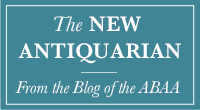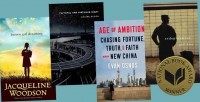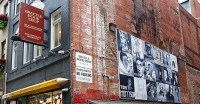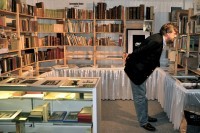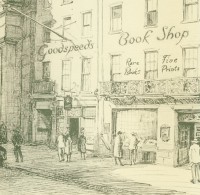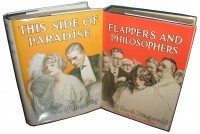It is circa 1788. An American lawyer, Archippus Seele (1765–1789) of Easton, Massachusetts, is apparently in a grumpy mood. The reasons could be many. Some in the community accused Archie's father, a sawyer, of employing the imps of Satan to keep things running. That could make you unhappy. If Archippus had been a precog perhaps he had a freak when he intuited his mother would become a distant ancestor to the creator of Tarzan, Edgar Rice Burroughs. Basically, and to the point, Archippus doesn't like women. We know this because he left behind a strange manuscript we've given a caption title of The Discription {sic} of the Female Sect. – A Woman Is As Full Of Failings As A Spider's Nest of Eggs. Why Did Esquire Seele write this manuscript and for whom? We may not ever know, but we surmise it was written in jest and we speculate his “essay” was shared in an exclusively male social sphere. Archippus thinks women are “deceitful crickets.” And he's not shy to elaborate: When a man is married, he had better be in a small cottage or cave in peace than in the statelyest palace in the world with one of these spendthrifts & diabolical conceited deceitful crickets which are much more destructive than the devouringst beast upon Earth {etc.}. Of course, this 18th Century-Man-About-Massachusetts wouldn't be a true misogynist unless being the son of the sawyer he pulled out this old saw against women: Among all the observation concerning women I have considered and observed that... [more What’s Eating Archippus Seele? A 1788 Lawyer’s Misogynistic Manuscript]
The 2014 National Book Awards were presented last night at a gala event at Cipriani on Wall Street. Daniel Handler (aka Lemony Snicket) was the master of ceremonies, and let no opportunity to mock a certain massive online retailer pass -- nor indeed, did several of the other speakers. The winners of the 2014 National Book Awards were: YOUNG ADULT FICTION: Brown Girl Dreaming by Jacqueline Woodson (Penguin/Nancy Paulsen Books) The third nomination for Jacqueline Woodson and her first win. POETRY: Faithful and Virtuous Night by Louise Glück (Farrar, Straus and Giroux) Glück, a former Poet-Laureate, had been a finalist for the National Book Award three previous times without winning. NONFICTION: Age of Ambition: Chasing Fortune, Truth and Faith in the New China by Evan Osnos (Farrar, Straus and Giroux) Evan Osnos, who writes for the New Yorker and is the son of Public Affairs founder Peter Osnos, lived in China for seven years while working on the Age of Ambition. FICTION: Redeployment by Phil Klay (Penguin Press) Iraq-War veteran Phil Klay gave a moving speech were he said that after serving in Iraq, he “came back not knowing what to think” and that writing the short stories in Redeployment was his attempt to process his experiences of war. “War is too strange to be processed alone.” Redeployent is the first collection of short fiction to win the prize since Andrea Barrett's Ship Fever in 1996. The Literarian Award for Outstanding Contribution to the American Literary... [more 2014 National Book Award Winners]
The recent posts by Peter Stern, Rusty Mott, and Joyce Kosofsky made me wish I was in Boston last weekend for the book fair, but circumstances conspired against it this year. However, in a spirit of Bostonian collegiality, I thought I'd write about something I have noticed in the past here in Europe: the false Boston imprint. Last year, Mitch Fraas at the University of Pennsylvania made a study of fictitious American imprints before the year 1800. By his count, there were 173 European books which purported to have been published in America, but weren't. The vast majority of those (136) took Philadelphia as their imprint, but Boston comes second, with 19. These 'not Boston' books are quite scarce, but you do see them from time to time. Here are a couple of examples. This is a translation of the spurious Memoirs of an unfortunate Queen, originally published in 1776 by the London bookseller, John Bew. The public bought up two editions within the year, and Bew also brought out one in French. The 'unfortunate queen' was Caroline Matilda (1751–1775), the youngest sister of George III who was married off to her cousin, Christian VII of Denmark, when she was only 15. It was not a happy marriage. Christian was a mentally unstable philanderer who claimed it was 'unfashionable to love one's wife', and Caroline eventually drifted into an affair with the royal physician Johan Struensee, a rising star at the Danish court who effectively ruled the country for ten months as Christian's men... [more Not Boston]
UPDATE (12/8/14): BOOKS RECOVERED A package of books has one missing in transit from California to Maine and contained the following items: (San Francisco) Ladies Aid Society of the Baptist Church. *The Baptist Church Cook Book*. First Edition. San Francisco: 1910. (Oakland) *The Ladies' Superior Cook Book*. First Edition. Oakland: Enquirer Publishing, 1899. (San Francisco) *Corona Club Cook Book.* Cloth. First Edition. San Francisco: 1910. (Los Angeles) *California Congress of Parents and Teachers, Los Angeles Tenth District: Tested Recipes*. Los Angeles: 1934. (Kansas) Daughters of the First Presbyterian Church. *Good Things to Eat.* Salina, KS: Padgett's Printing House, 1922. (Arizona) *Presbyterian Ladies' Aid Cook Book.* First Edition. Phoenix: c.1900. (Nebraska) *The Loup City Cook Book: A Collection of Tried Recipes, Compiled by the Ladies of Loup City, for the Benefit of the Baptist Church.* First Edition. Loup City, NE: Standard Gauge Print, 1909. (Utah) Pratt, P.P., ed. *Home Economy, Etc.* Second Edition, Revised & Enlarged. Salt Lake City: P.P. Pratt, 1895. (Utah) *Recipes Compiled by the Ladies of St. Mark's Guild 1886, Revised 1909.* Revised Edition. Salt Lake City: Ackerman & Co., 1909. (Wyoming) Woman's Club. *Parco Cook Book.*. First Edition. Parco, WY: Woman's Club, 1930. (Colorado) *Choice Recipes Compiled by the Ladies of St. Mark's Guild.* First Edition. Victor, CO: Leary-Poole Job Print, c.1900. (Colorado) Guild of All Saints Mission. *“Columbine”: A... [more Missing in Transit: Package of Rare Cookbooks]
Things have changed in the Boston since the first ABAA Boston Book Fair was launched. And in a profession that deals in the old, change can be a good thing. There were shops that were within walking distance from each other. Others were a short subway ride or car ride away. And while we're going down memory lane, let's include Cambridge and a suburb or two. (Greg, Gloucester is not a suburb of Boston, but I'll mention you anyway). Back in the day (let's use the first ABAA Boston Book Fair as a reference point), there was Brattle, Goodspeed's, Starr, Sam Morrill, F.A. Bernett, Temple Bar, The Bromers, Mike Ginsberg, Robin Bledsoe, Ernie Morrell, the O'Neals (David and Mary,) the O'Neills (Jimmy and Gene), and Harold Burstein. Change came about in a variety of ways. Goodspeed's lost momentum during the 1990s. As a result, George closed the 'used book' shop on Milk Street and moved his 'rare book' shop from its Beacon Street retail shop to an office. Eventually the shop closed and George died in 1997 without leaving an heir. Ernie Starr and Sam Morrill passed, too. Norm Starr ran the shop for a while, but with soaring rent, he moved to Cambridge, then further out, and eventually closed shop. Ernie Morrell had a lovely shop of dance and theater arts books on the flat of Beacon Hill. Harold Burstein, one of the founders of the Boston Book Fair, dealt from Waltham, not too far out from the City. His legacy continues, but further west, in Bernardston, MA. The Cantabrigians also fell... [more Changes: The Boston Bookstore Scene]
This item is still missing as of 5/31/2019. A collector in the Los Angeles area reported the theft of the following item: Age of Innocence by Edith Wharton First Edition (1st Issue) in dust jacket. The book is housed in a blue half leather clamshell box. The dust jacket is unrestored and has a small tape repair on the verso of the jacket near the foot of the spine. A photo of the book is below. If you have any information concerning this book, please contact Mike Hurey at mhurey@kleinberglerner.com or at (310) 871-2646. [more Stolen: ‘Age of Innocence’, First Edition in Dust Jacket]
I've been asked to dredge up a few memories about the Boston book fair, the venues it occupied prior to its current home at the Hynes Convention Center, and some of the dealers who exhibited in Boston in previous generations. Our firm, Howard S. Mott, Inc., is one of six firms to have exhibited at every Boston book fair since its inception in 1976, the upcoming fair being the 38th Annual. The others are Brattle Book Shop, Michael Ginsberg, aGatherin', Rulon-Miller, and Phil McBlain. The idea for the book fair came from Harold Burstein, and at the first exploratory meeting were Harold, Ken Gloss, Ken Rendell, and Mike Ginsberg. When the Boston Antiquarian Book Fair began our firm was still a member of the Mid-Atlantic Chapter of the ABAA. The firm started business life in New York City when there was no New England Chapter, and twenty years later, after my father and mother moved the family to Massachusetts in 1956, there was still no NE Chapter. When such a chapter was established my parents were slow to make the change. Thus, we were not involved with the creation of the fair. The early fairs were managed by Anne Bromer's mother, the indomitable Florence Finn. She was small in stature, but large in personality and authority. No problem was too big or too small for her, and she ran the show beautifully until she retired after something on the order of ten years at the helm. The first few fairs were held at the Copley Plaza Hotel, and they started slowly despite its ideal loca... [more Recollections Of The Boston Book Fair, By A Lifer]
Peter L. Stern introduces several notable characters in the Boston rare-book trade. I have been asked to write a blog for the ABAA along the lines of “characters in the Boston book trade.” I hardly know where to begin, but I'll give myself a pass and leave it to others to extoll my virtues and undisputed genius. My own career in the antiquarian trade started at the Starr Book Company on Kingston Street. This was very nearly where the Great Boston Fire (1872) originated, and our building was likely built on those ashes. It may have been 1972 outside, but inside it was a century earlier. We only had direct current, our heat came from a central Edison steam plant, and “air conditioning” was supplied by an industrial fan that sounded like a revving B-24. My morning's first task was to sweep the floor and then pack shipments, which were bundled with string. Remember packages tied by string? My starting pay was a princely $100 a week, but given the modest business that paid it, I never resented it, although more than once, I was very nearly felled by book avalanches. My boss, Ernie Starr, had been in the trade since the late thirties or early forties. He possessed a genuine enthusiasm and appreciation for books, even if he occupied a low rung on the ladder. He was originally in business with his brother Milt, a rather gruff man. Eventually, he and Ernie split up. Milt got Cambridge, Ernie got Boston. I particularly recall one anecdote Ernie told about their partnership. The... [more Boston: Characters in the Rare Book Trade]
A New England Correspondence Archive: Descriptive Notes and Approach to Valuation Recently a Massachusetts antiques dealer sought me out to evaluate an archive of approximately 100 autograph letters received by one Edward B. Dearborn (1807-1886), including many related to teaching, mostly in rural New England schools in the late 1820s and early 1830s. What at first appeared to be a boring batch of correspondence written by a group of nobodies turned out to be a fascinating window into the culture and practice of teaching in early 19th Century New England, and also provided a case study of how an appraiser assesses a unique collection of material that doesn't include traditionally collectible famous personalities. Most people are familiar with Teach for America, the organization that recruits “high-achieving” recent college graduates and professionals for two years of teaching service. Yet the idea of reaching into colleges to employ students or fresh graduates to teach in communities that lack educational opportunity is hardly new. The arrangement goes back at least to early 19th Century America, when students at colleges such as Dartmouth, Bowdoin, and Wesleyan often taught for a few months each year to gain income needed to continue their studies. Dearborn, the recipient of the letters, taught school for decades before being appointed as Librarian of the New England Genealogical Society. A graduate of Hampton (NH) Academy, he prepared for college, but never attended. At... [more Dear Mr. Dearborn…]
Although created almost a century ago, the art and writing of the Roaring 20's still captivates us today. Writer F. Scott Fitzgerald left behind some of the most iconic stories of this fascinating time period. The radical social change he wrote about was also evident in the art that adorned his dust jackets, as the artists who designed them had an uncanny ability to capture the zeitgeist of the era. Art imitated life, and Fitzgerald and his publishers knew how to captivate the attention of a younger generation, the ones who were behind all this change, like never before. Fitzgerald's first three dust jackets were designed by artist William E. Hill. Hill had made a name for himself illustrating for Puck magazine and the Sunday New York Tribune. His ability to depict everyday people in natural settings was well-known, so when Scribner's editor Maxwell Perkins needed to choose an artist for Fitzgerald's upcoming publications, he looked to this established artist. This Side of Paradise (1920) depicts an elegantly dressed young man and woman, portraying all the decadence and extravagance of the era. The cover art for Flappers and Philosophers (1920) features an illustration for perhaps the best story in the collection, “Bernice Bobs Her Hair.” The choice of both title and art for this book did well to make it a best-seller: the word “flappers” and the art showing a young girl cropping her hair in the latest style are at once attractive and provocative, easily capturing the... [more The Artists Behind F. Scott Fitzgerald’s Dust Jackets: Part I (1920-1923)]

